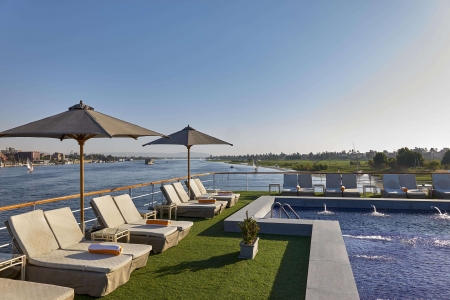Location:
It is located South of Aswan High Dam, near Kalabsha temple in New Kalabsha area, at Aswan.
Who built it?
It is considers one of Ramesses II Nubian monument.
Why it was built?
It was built to dedicate to God Amon and other Gods.
Explanation:
Beit el-Wali was rescued from Lake Nasser by a Polish archaeological team financed by a joint Oriental Institute of Chicago/Swiss Institute of Cairo Project.
The temple itself was built on a symmetrical cruciform plan. It is consisted of a deep hall, a transverse antechamber with two columns and a sanctuary. Known as a speos, the temple was mostly hewn from the surrounding rock, except for the front wall of the deep hall with its central doorway.
There are reliefs on the deep hall considerable historic value because they provide depictions of the Syrian, Libyan, and Ramesses II's triumph over the Nubians. The scenes of the Nubian campaigns depict several sons of Ramesses II engaged in the battle.
There is a central doorway, which was later added, that communicates with a transverse antechamber. Its rock ceiling is supported by two architrave oriented north-south, supported by two sturdy fluted columns. These columns are rather unusual, being a type known as "proto-Doric", with four vertical plane sides, inscribed, having entices, a blank horizontal fillet at the top, and a square abacus.
At each end of this transverse hall in the rear wall is a niche containing a statuary group consisting of Ramesses II between two deities, from the rear wall of the antechamber, a single doorway leads to the single sanctuary, in the rear wall of this chamber, a niche with three statues representing Ramesses II between two deities, is cut into the wall.
There are many opinions on the art on the temples. Archaeologists have suggested that there were as many as four stages of construction resulting in this small temple, and perhaps as many as three artists whose hands sculpted the walls. During the early Coptic era, the temple was transformed into a church.
Customize Your Dream Vacation!
Get in touch with our local experts for an unforgettable journey.
Plan Your TripEgypt Travel Guide
Egypt Oases
- Gara Cave
- Al-Deer
- Badr's Museum
- Bagawat
- Black desert
- Cleopatra bath
- Great Sand Sea
- Mizawaka
- Monastery of Anba Bishoy
- Mountain of the Dead in Siwa | Gebel al-Mawta
- Qarun Lake
- Roman Temple in Deir El-hagar
- Temple of Alexander the Great
- Temple of Amon
- Temple of Dush
- Temple of Hibis
- Temple of Nadura
- The Crystal Mountain | Bahariya Crystal Mountain
- The Monastery of Abu Makar (Makarios) | Egypt
- The Monastery of Baramus | Egypt
- The Monastery of El Suryan | Cairo Attractions
- Therapy in Siwa Oasis
- Valley of Al-Haiz
- Valley of the Golden Mummies
- Wadi Al- Rayan, Protected Area | Fayoum, Egypt
- Wadi El-Natroun | The Monasteries of Wadi El Natrun
- The White Desert in Egypt
- Fayoum Bird-watching Guide
Ports of Call
Red Sea and Sinai
Famous Mosques in Egypt
Transportation guide in Egypt
Egypt Tourist Attractions
Egypt Pyramids
- Djedefre Pyramid | Abu Rawash
- Abu Sir | Egyptian Necropolis & Pyramids
- King Snefru's Pyramid | Egypt
- Old Kingdom Pyramids | Ancient Egypt
- Pyramid Complex of Pepi I
- Pyramid of Amenemhat III
- Pyramid of lahun | Egypt Pyramids
- Pyramid of Meidum
- Pyramid of Neferhetepes | Egypt Pyramids
- Pyramid of Netjerkhet | Egypt Pyramids
- Pyramid of Neferefre
- Pyramid of Sahure | Egypt Pyramids
- Pyramid of Sekhemkhet
- Pyramid of Sesostris III
- Pyramid of Teti | Egypt Pyramids
- Pyramid of Userkaf | Egypt Pyramids
History of Egypt
- The False Doors | Ancient Egypt Secrets
- Egyptian Canopic Jars: What are Canopic Jars?
- Holy Family in Egypt
- king khufu (Cheops) | Kings of Ancient Egypt
- Khafre Statue | King Khafre Pyramid
- Who built the first pyramid in Egypt
- Menkaure (Mykerinos) Pyramid | King Menkaure
- Ramesses IV | Ramses iv Tomb
- Ramses IX Tomb
- The Divine Triad of Dendera
Aswan Attractions
Luxor Attractions
Alexandria Attractions
Cairo Attractions
- Famous Bab al Futuh
- Al-Tannoura Egyptian Heritage Dance Troupe
- Saints Sergius and Bacchus Church
- Abusir Pyramids & The City of The Dead Egypt
- Agricultural Museum Egypt, Cairo
- AL Fustat Historical City
- Bab El Nasr Cairo City Gate
- Beit Al Sennari or Al Sennari House in Cairo
- The Cairo Tower
- Birqash Camel Market in Cairo
- Coptic Cathedral in Abbasiya
- Egyptian Museum Guide
- El Mosky Cairo | Bazaars & Souks
- King Tutankhamun Treasures: Inside the World of Egypt’s Most Famous Pharaoh
- The Mosque of Muhammad Ali Pasha in Cairo
- Royal Mummy Room in The Egyptian Museum
- The Pharaonic Village
- The Great Sphinx of Giza
- Babylon Fortress Facts
- Solar Boat Museum
- Valley Temple of Khafre
- St Mary Egypt Orthodox Church
- Verdi Aida Opera Show in Giza Pyramids Egypt
Enjoy Abu Simbel Day Trip by a modern A/C coach early in the morning to visit the two rock-carved temples at Abu Simbel. These temples are unique both in style and in their setting on the banks of Lake Nasser.
Pure luxury and unrivalled Swiss hospitality await on Movenpick Royal Lotus Nile RIver cruise as you embark your journey from Luxor or Aswan. It will give you the chance to discover the ruins of Ancient Egypt with style and comfort.
Enjoy your cruise down the Nile with the Movenpick Royal Lily Nile River cruise. This Nile cruise offers stylish and comfortable suites, an elegant dinning room,a spacious sundeck, swimming pool and other amenities.
Make the trip to Abu Simbel easy! Board a plane in Aswan in the morning and fly to Abu Simbel. Spend the morning admiring the incredible rock-cut tombs on the shore of Lake Nasser before flying back to Aswan.
Plan Your Trip!
You Might Also Like
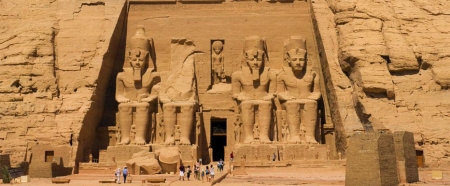
Nubian Monuments stretched between Aswan and Abusimbel at Nasser lake. This place contains many monuments built by different kings through different periods.
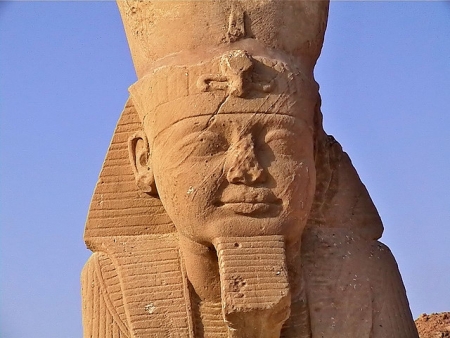
Wadi El Seboua Temple, in Arabic means “Valley of the Lions”, referring to the avenue of sphinxes that leads up to this temple, which was built during the reign of Ramesses II.
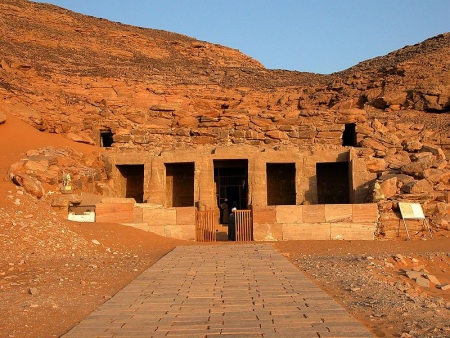
Temple of Derr was built during the time of king Ramsis II, exactly during the 30th year of his reign. It was dedicated to god Ptah and god Amon.
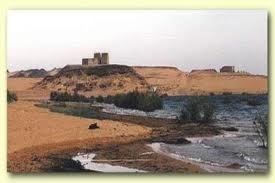
Located fifty miles to the north of Dekka Temple, Mohrakka Temple was built during the Greek Roman period. It was dedicated to Isis and Serapis. It is a small and simple temple.
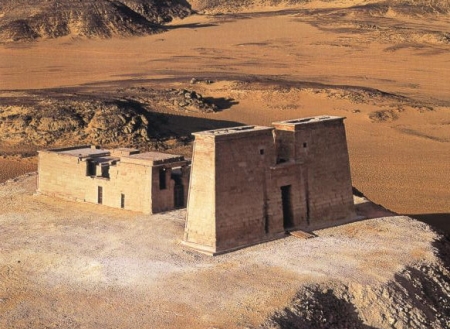
El-Dakka was known to the Egyptians as Pselqet and to the Greeks as Pselchis. This Temple nowadays, sits on a small bluff. Learn more.
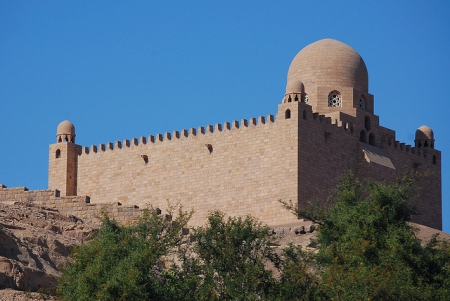
Agha Khan Mausoleum, situated 4 km from Aswan train station, Agha Khan Mausoleum was the founder of the mausoleum. Agha Khan was the leader of the Shiites.
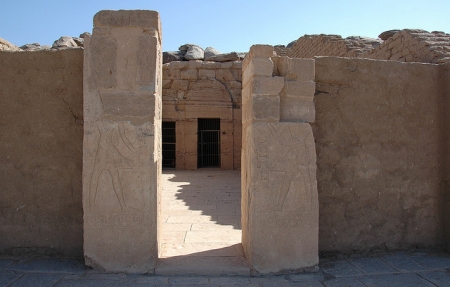
Beit el-Wali was rescued from Lake Nasser by a Polish archaeological team financed by a joint Oriental Institute of Chicago/Swiss Institute of Cairo Project.

Situated south of Kalabsha temple , due to the rising waters of Lake Nasser after the construction of the High Aswan Dam, Kiosk of Kertassi was moved to another place the same as all the Nubian monument .
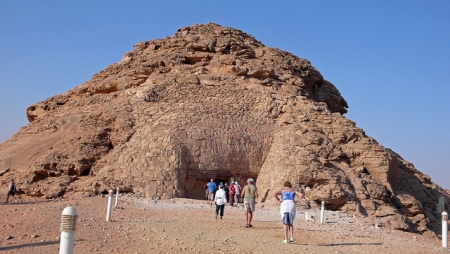
The tomb is a kind of rock cut tombs. It is consisted of antechamber, then a niche where there are the remains of three destroyed statues.




